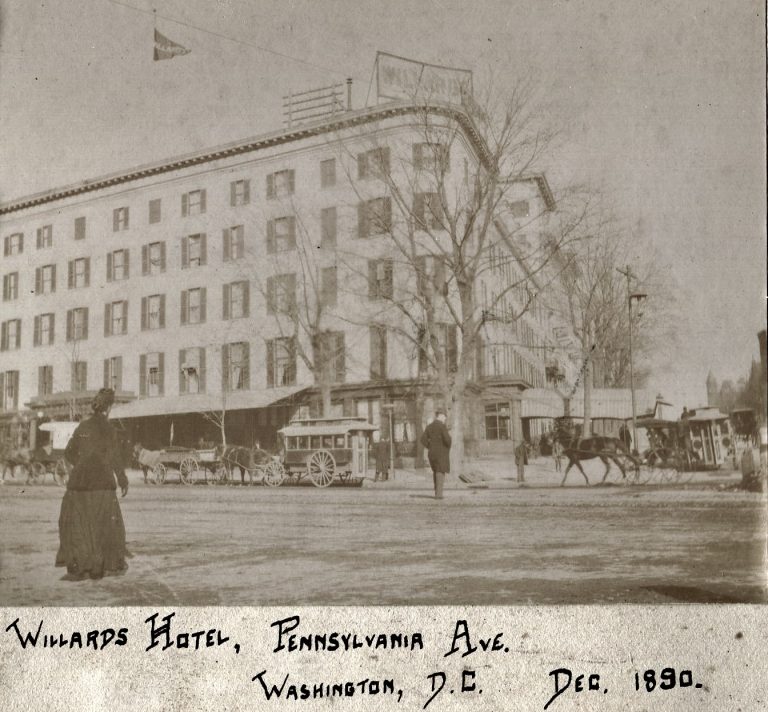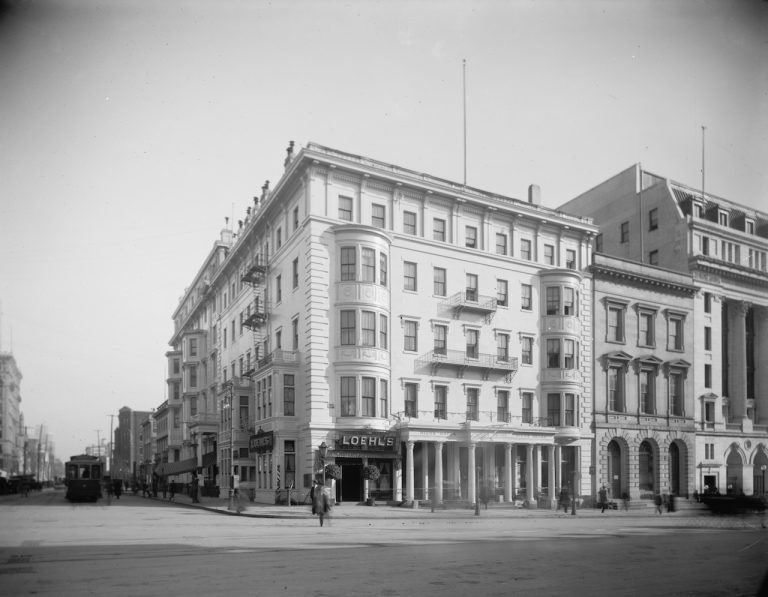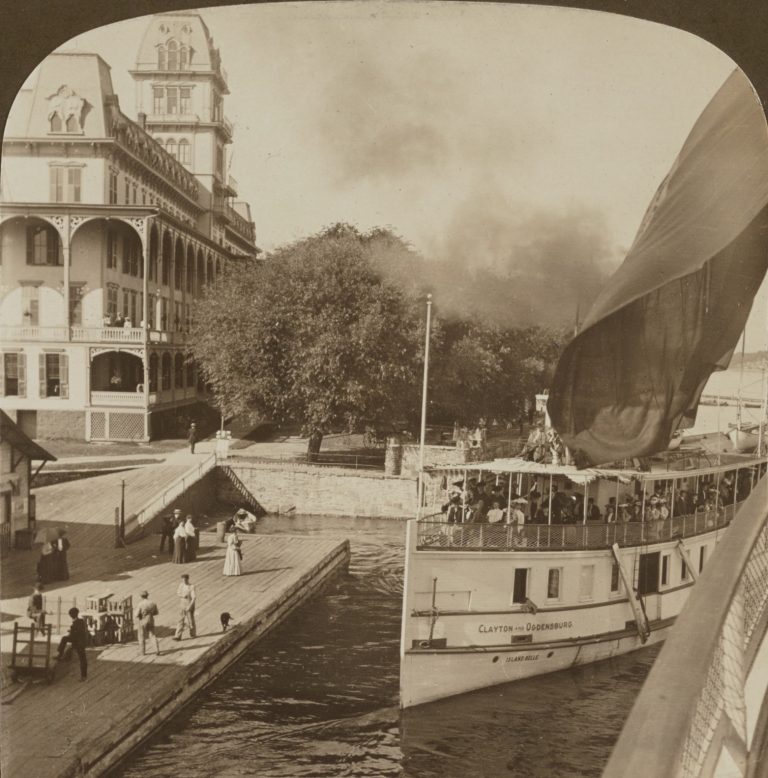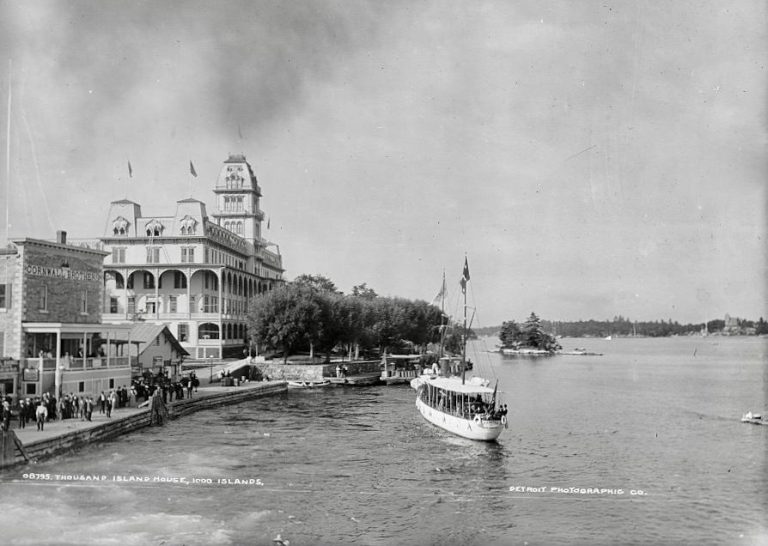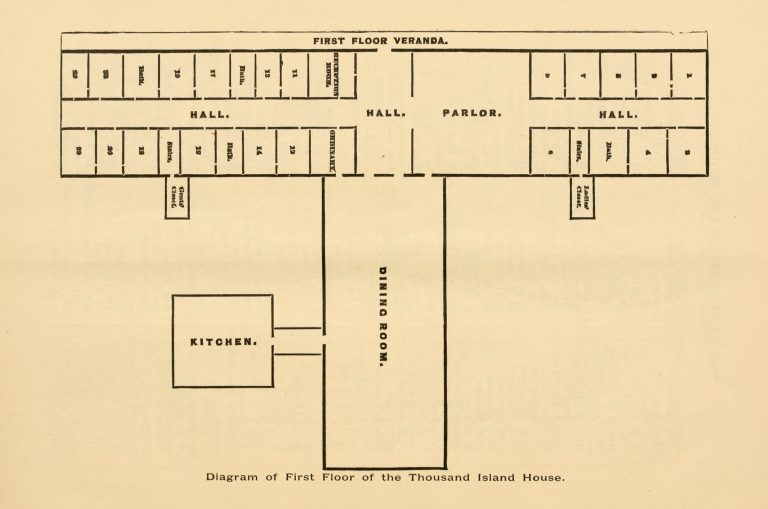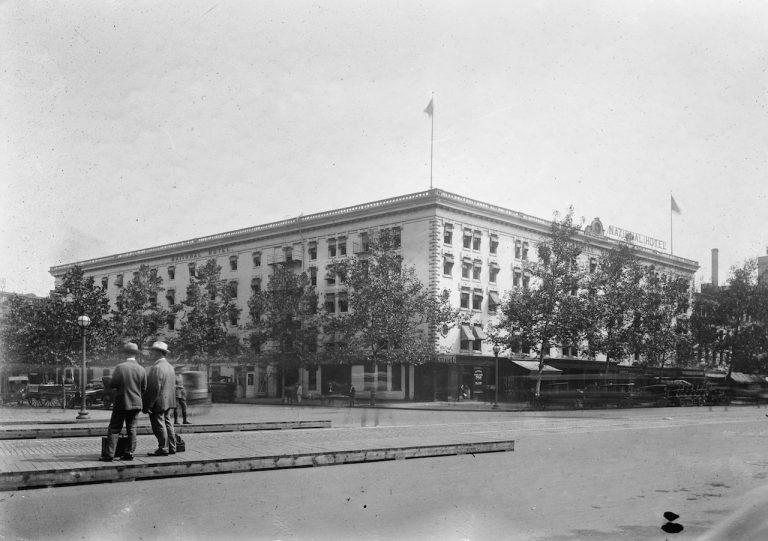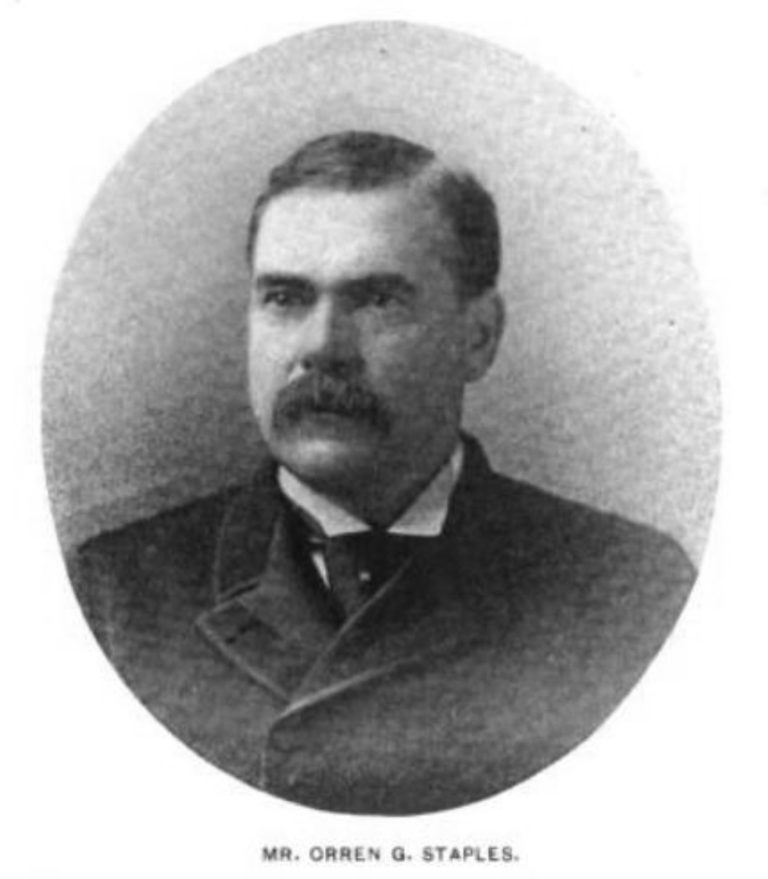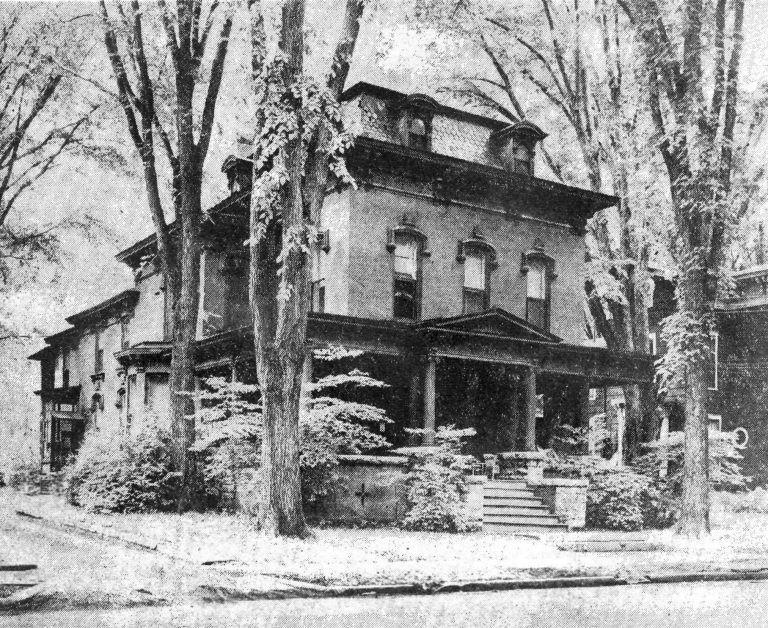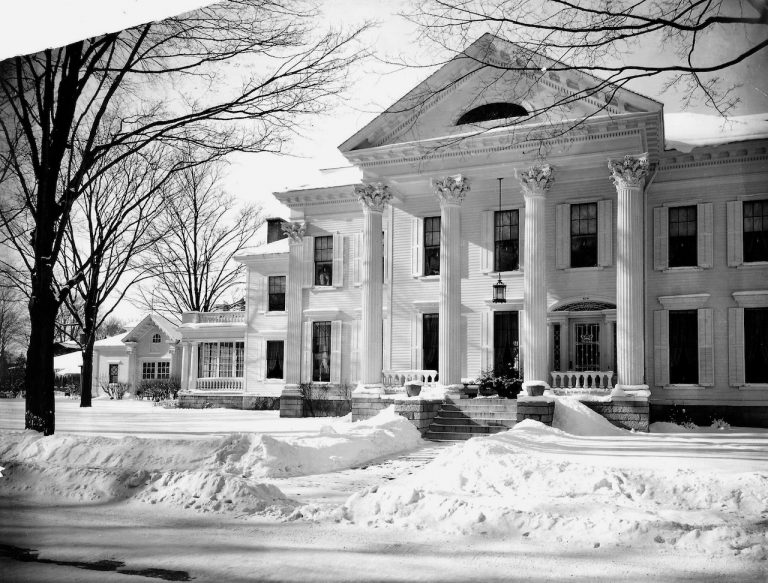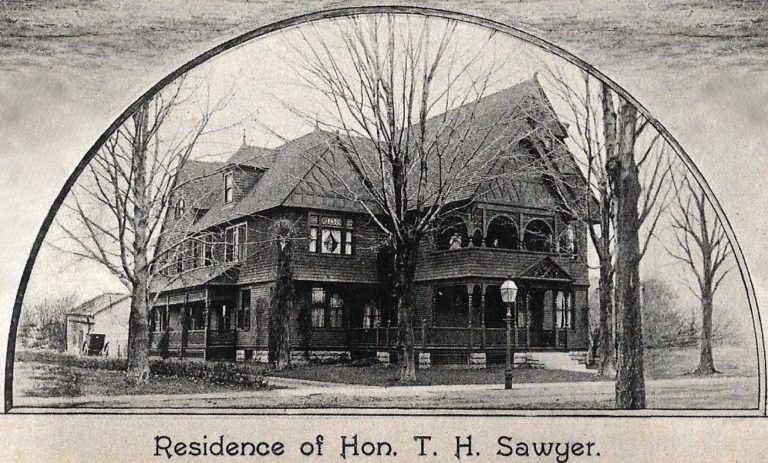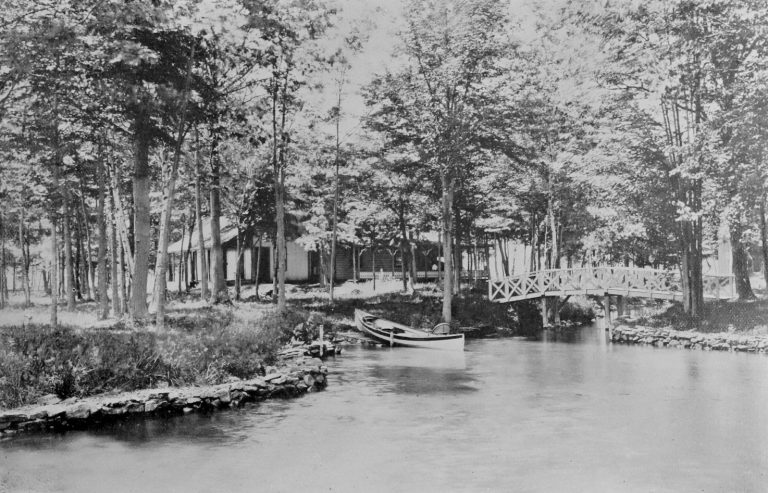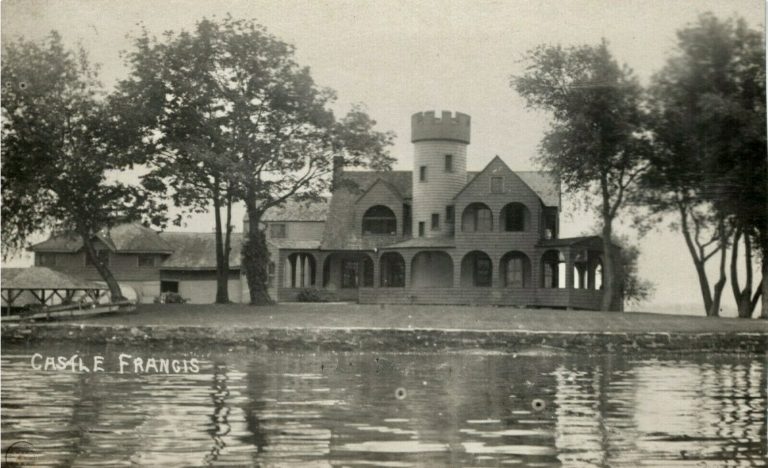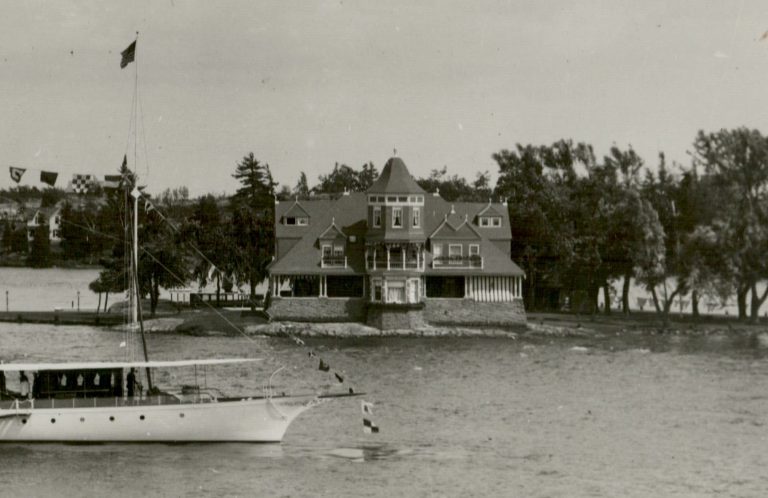Watertown’s Orren G. Staples, An Influential Hotelier From 1000 Islands to Washington, D.C.
A descendent of Scottish Nobles, Orren G. Staples wasn’t one to rely on familial legacy and carved his own path from his modest beginnings in Watertown, New York, near the crest of State Street Hill, to Washington, D.C., through relentless hard work. It was written of him in The Washington Sketch Book by Ida Hinman, published in 1895: “There is said to be a large fortune awaiting the heirs in Scotland, but they seem to be too busy making their own fortunes to cross the ocean for it.” As a side note, O. G. Staples is often called Col. O. G. Staples but never served in the military.

Born in Watertown in 1838, Orren G. Staple’s maternal great-grandfather was a captain in the Revolutionary Army. His father’s lineage was of nobility from Scotland, amongst Connecticut’s early settlers. Despite this, Staples received nothing more than a good but common education in the village before leaving home at the age of sixteen. With less than $100, he made up with fortitude and energy what he lacked in funds to start a patent medicine business which grew to a large scale before he sold his interest to a wholesale druggist in Albany, N.Y.
Returning to Watertown, Orren G. Staples soon found himself embroiled in the real estate business and began constructing a number of homes in the village, many considered amongst its finest, along with one brick-block building. It is believed that he built the large mansion at what was then 37 Arsenal Street sometime around 1864-65, for his wife, Helen Staple, purchased the property from Sarah M. Woodruff Flower, wife of Roswell P. Flower, in 1863 (the property was part of the Norris Woodruff, builder of the Hotel Woodruff, estate.)

The 18-room house, and its location(s), had an interesting history, to say the least, and was built by Roswell D. Murray, a stone mason. Born in 1800 in Fairfield, N.Y., Murray spent his formative years in Lewis County, where he learned to be a stone and brick mason. He eventually built the likes of the James D. Le Ray de Chaumont mansion near LeRaysville, now part of Fort Drum, the historic John Felt mansion in Felts Mills, The Woodruff and American Hotel, Kirby House, the stone dam for Knowlton Brothers, and some of the structures at Madison Barracks. More history on the house in a bit.
After President Ulysses S. Grant visited the 1000 Islands as a guest of George Pullman at his island cottage in 1872, Alexandria Bay and the 1000 Islands were put in the national spotlight, thanks to the National Press Corps. With only the Crossmon House to contend with, the enterprising Orren G. Staple, along with C. A. Nott, proprietor of the American Hotel in Watertown, seized the opportunity to usher in the Thousand Islands’ Gilded Age with a new, modern hotel and built the Thousand Island House, which opened the following year.
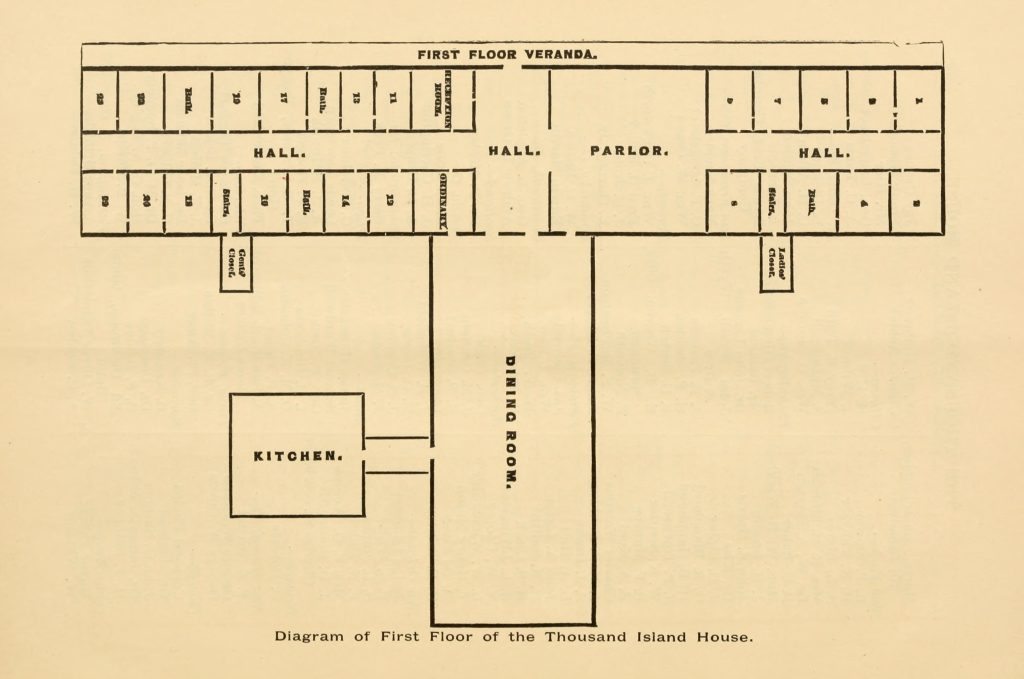
It was said the duo originally wanted to build it at Clayton, then Fisher’s Landing, but Cornwall & Walton nearly gifted them the land in Alexandria Bay. Their original plan was to build the Thousand Island House twice its size if it weren’t for the neighboring Crossmon House.
A luxurious hotel that could accommodate 600 guests, the Thousand Island House was, in the annals of such hotels in the region, an oddity in that it had a relatively long lifespan and wasn’t destroyed by fire. Upon its opening in early July, the Watertown Daily Times reported–
This “Thousand Island House” as it is called, which will hereafter give luxurious accommodations to those who go to the islands, commands the finest views of the river in both directions, and most of the favorite islands and island groups may be seen from its lofty tower. It was named by Gen. S. D. Hungerford, banker at Adams, who has also presented the proprietors with a beautiful set of colors for the building.

Orren G. Staples wrote a book detailing the Thousand Islands and the Thousand Island House in the 1870s and owned and operated the hotel until 1883. He sold it then and moved to Washington, D.C., where he became the proprietor of the famous Willard Hotel, built anew c.1900 and known today as the Willard InterContinental Washington, located at 1401 Pennsylvania Avenue.
The hotel has numerous historical ties to many political events. Staples operated it until 1895, when he transferred it to Morgan D. Lewis, former landlord of the Princess Anne Hotel in Virginia Beach. The hotel would be rebuilt as a 12-story structure and added to the National Registry of Historic Places in 1974.
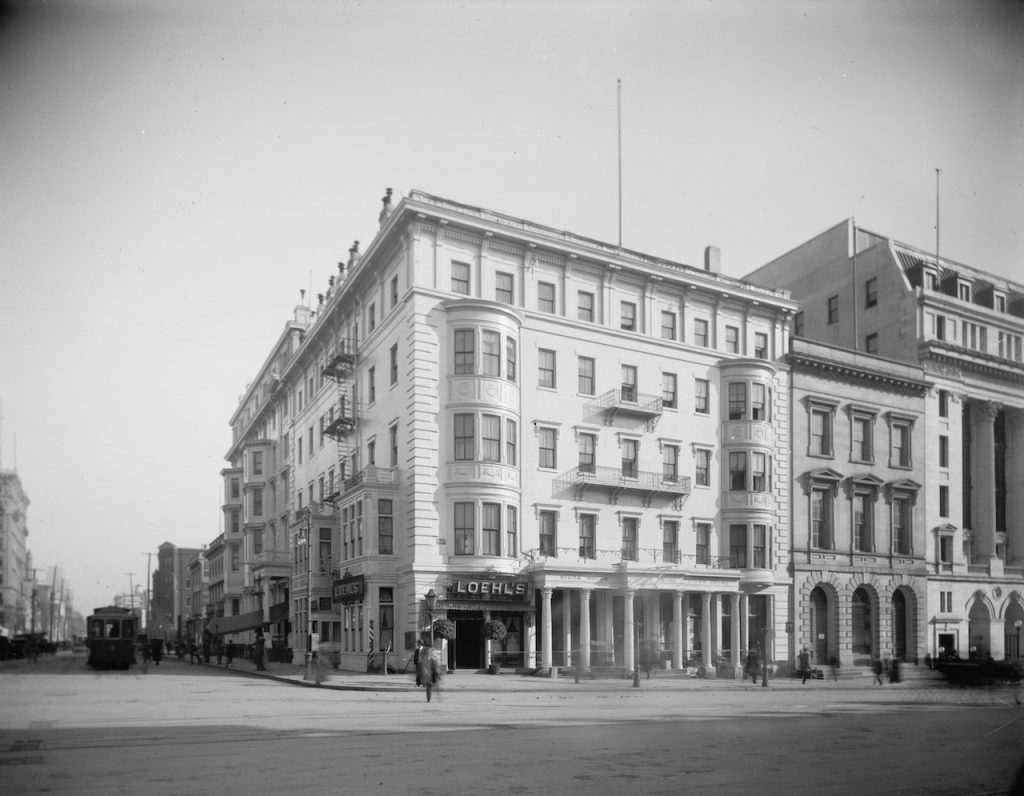
Staples also became the proprietor of the Riggs House at Pennsylvania Ave and 15th Street and thoroughly renovated it in 1891. He operated it via a lease for two ten years until 1911. At that time, he opted not to sign a new lease, and the building was torn down by its owners, the Riggs family, heirs to the building’s original owner, banker George W. Riggs, and replaced with a modern office building.
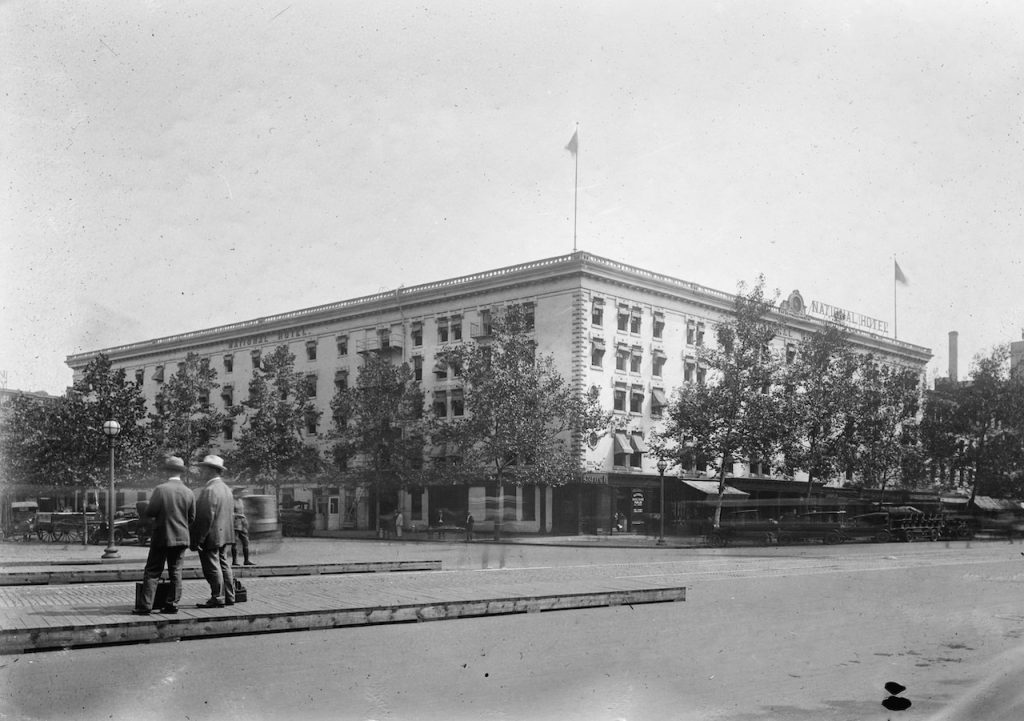
A third Washington, D.C., hotel, The National, located on Pennsylvania Ave and 6th Street NW, also had Orren G. Staples as its proprietor during this time. Some history buffs may recall this as the hotel that John Wilkes Booth spent the night at, room 228, the night before his assassination of President Abraham Lincoln.
Despite their move to Washington, D.C., the Staples continued to own and maintain their residence on Arsenal Street for several years until it was sold to the United States Government in 1889 for $15,000. The land the property stood on was subsequently used to build the first United States Post Office in Watertown, N.Y., after having the operation run out of the Paddock Arcade for a number of years.
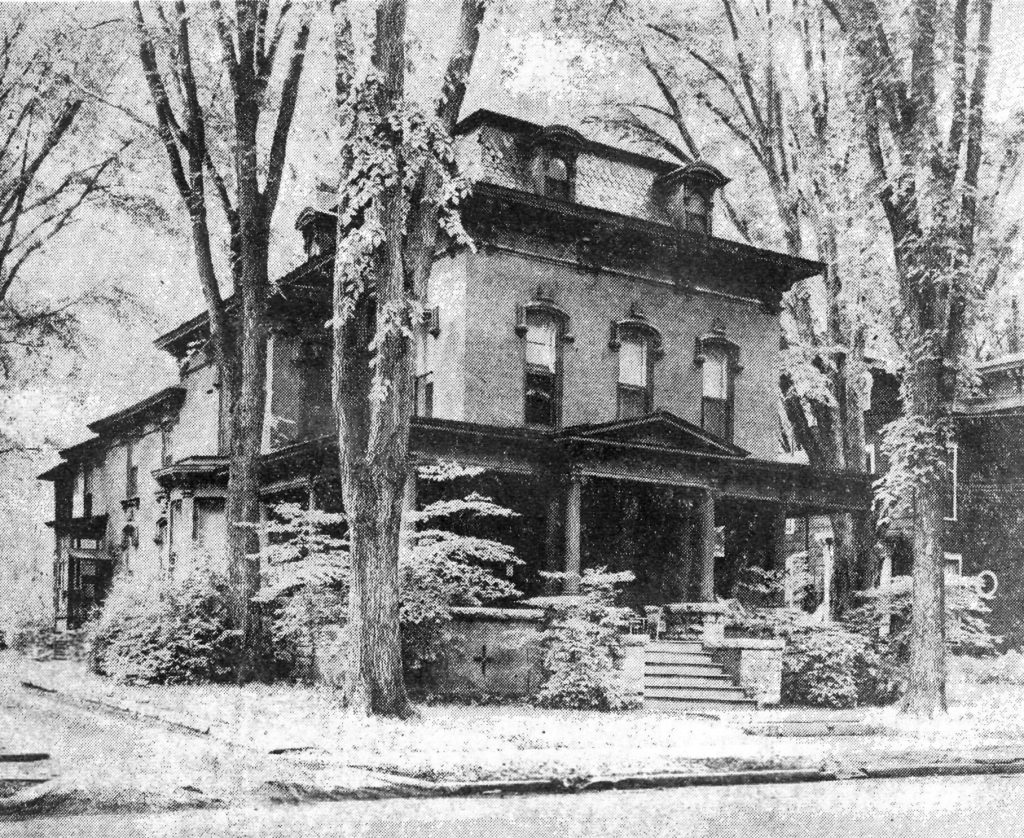
Lotus Ingalls purchased the mansion on Arsenal Street then and relocated it. Per David Lane’s article in his column, Old Houses of The North Country, stated–
About 1889, when the United States was preparing to erect Watertown’s first post office building, the site Lotus Ingalls, one of the founders of the Watertown Daily Times, purchased the house and engaged contractor Patrick Phillips to transfer it to its present Mullin Street site. It was taken down, each brick numbered, and set up in its original design at what was (then) 171 Mullin Street.
It is of historical interest that just before the present brick post office and federal building was erected, contractor Milo L. Cleveland purchased the marble post office building which replaced this house and had it transferred stone by stone from the same site and set up at the corner of Arcade and Stone streets, where it is now the Elks clubhouse and lodge hall. Thus have two buildings been removed from the same site and set up in original design in new locations.
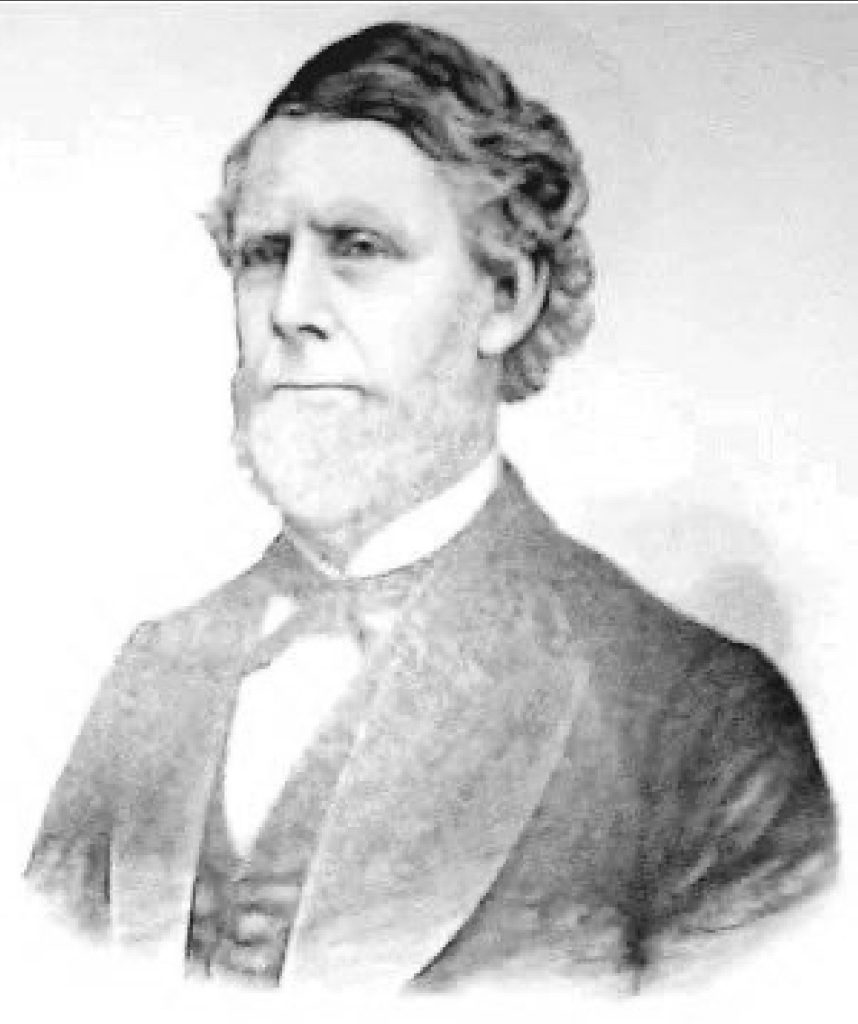
Lane further discussed the mansion as having a Mansard roof and 22 heavy black walnut doors of beautiful craftsmanship inside. A couple of beautiful hand-carved weathers of leaves and fruit in medallion ornament the front doors.
After Lotus Ingalls died in 1897, the property went to his widow, who died without a will in 1904. The house then went to her daughter, Mrs. Alice E. Woolley, of Brooklyn, who sold it. In 1912, it was sold to Frank M. and Ada Barnes Williams, who occupied it until 1948, when it was sold to John R. and Rosamond Burns, who turned it into an apartment house. A definitive date for when the house was torn down could not be found, but it appears it was either in the late 1960s or early 1970s.
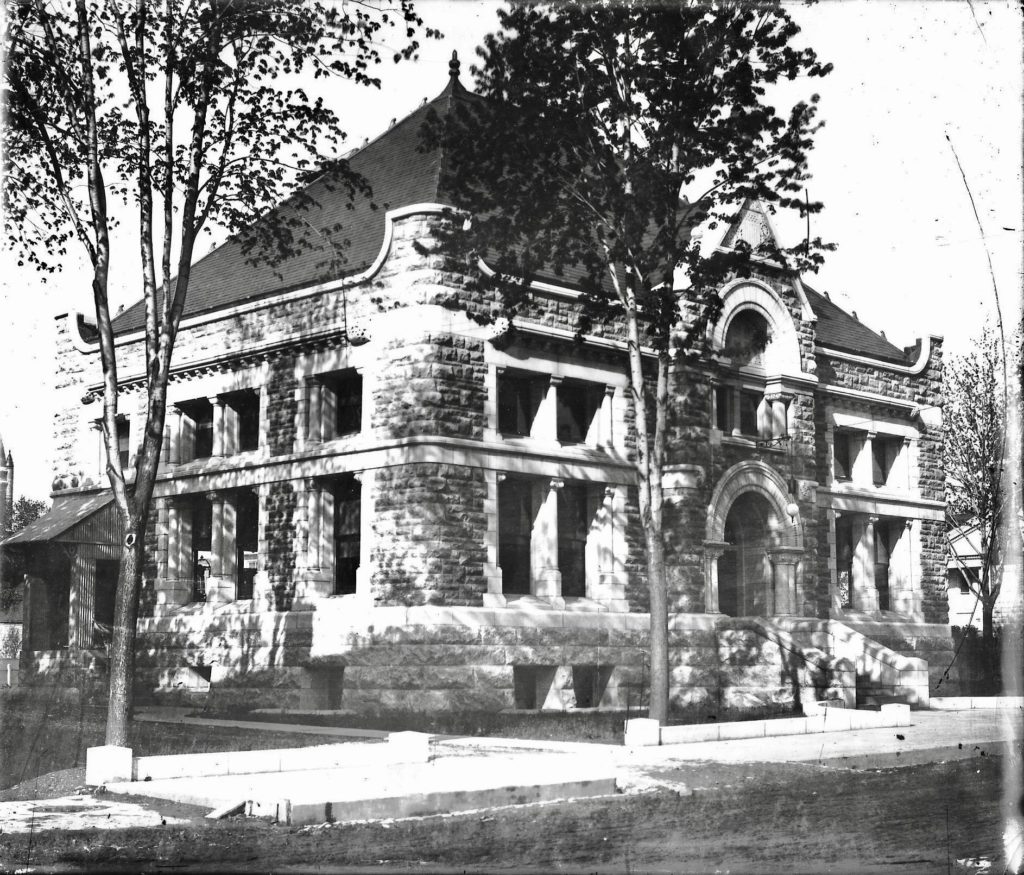
In 1897, Orren G. Staples repurchased the Thousand Island House and, according to the booklet, The Thousand Islands, by the New York Central and Hudson River Railroad Company, published in 1900, the resort underwent significant changes–
It is in this central locality that Col. O. G. Staples conducts the large and commodious Thousand Island House. The house has been entirely refurnished and decorated and every detail put in complete repair. Fifty bathrooms have been added and the plumbing renewed throughout. It is built upon a magnificent scale, and its beautiful location, easy accessibility to the best fishing grounds on the river and islands render it the most attractive place on the river. It will accommodate 700 guests. Visitors stopping at the Thousand Island House will find the rest, comfort and attention which they seek. Also that the marvelous atmosphere is an absolute cure for hay fever, insomnia and all pulmonary complaints.
Staples’s long-time wife, Helen, passed away in 1902. He remarried in 1913 to Cecilia Kinnear in Alexandria Bay and had a child with her before he passed away at the age of 80-81, September 8, 1918. His obituary printed the next day in The Times, read, in part–
Col Staples was about the Thousand Island House all day and until a short time before his death was in high spirits. He took a bath, donned his pajamas, and went to his room. He fell over on the bed exhausted, and before physicians could be summoned he was dead.
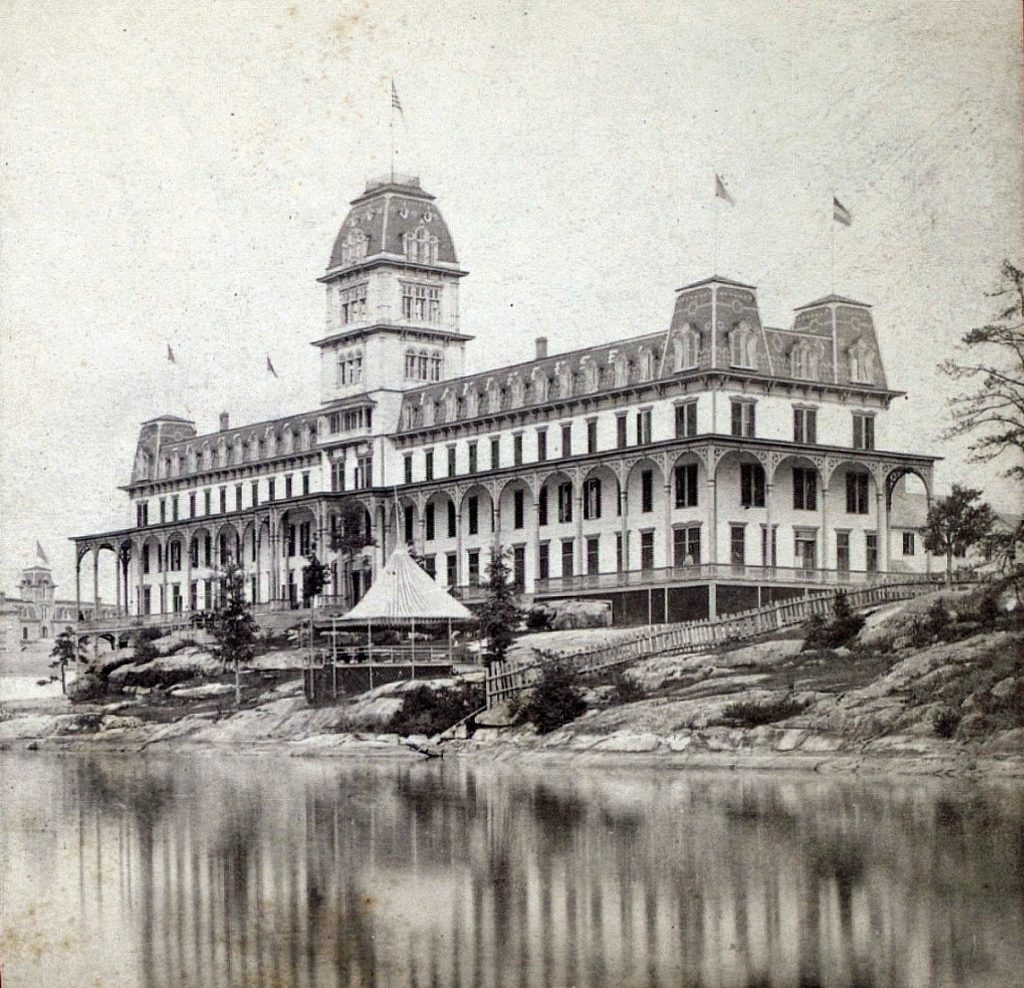
The obituary further went on to discuss the grand opening of the Thousand Island House in July 1873—
Old residents of the river towns still recall the opening day of the Thousand Island House. Mr. Staples’ ability as a press agent had been exercised, and crowds came from all over Northern New York and the St. Lawrence section of Canada to witness the land and water sports advertised.
The Thousand Island House fed hundreds of hungry visitors, and all day until far into the night, a dozen dispensers of refreshments flung bottles and glasses along the bar and raked country boys’ one and two-dollar bills offered in payment for a couple of beers or cigars into the cash drawers with the unsympathetic information “No time to make changes. Stand back and give others a chance.”
And Staples, sitting in a corner in company with a gentlemen friend, laughed at the discomfiture of the victims and said, “Just watch those fellows rake in the cash. Another day like this, and we will be able to pay for another hotel.”

Orren G. Staples left behind an estate worth over $1,500,000. Throughout his life as a hotelier, he was a bank director, member of the Board of Trade, and treasurer of the Business Men’s Club. Other properties included the Valley Stock Farm in Adams, N.Y., and a country place in Rome, N.Y.
During their years there, Mr. and Mrs. Staples did much to contribute to the poor of Washington, D.C.. For several years, he opened a soup house at his own expense, feeding thousands and giving away large quantities of poultry each year.
